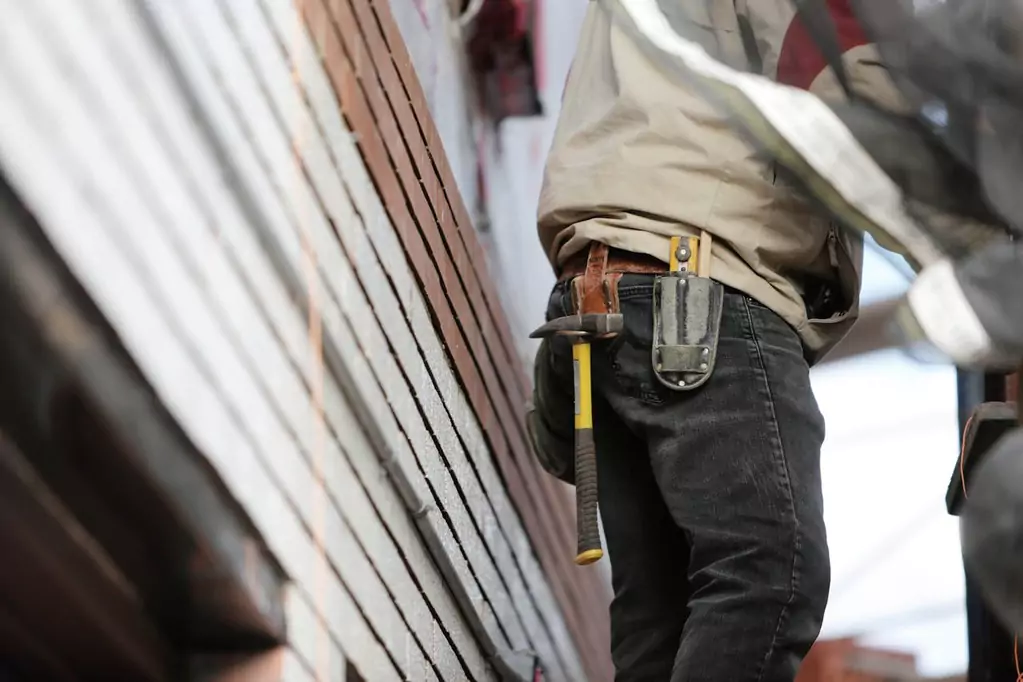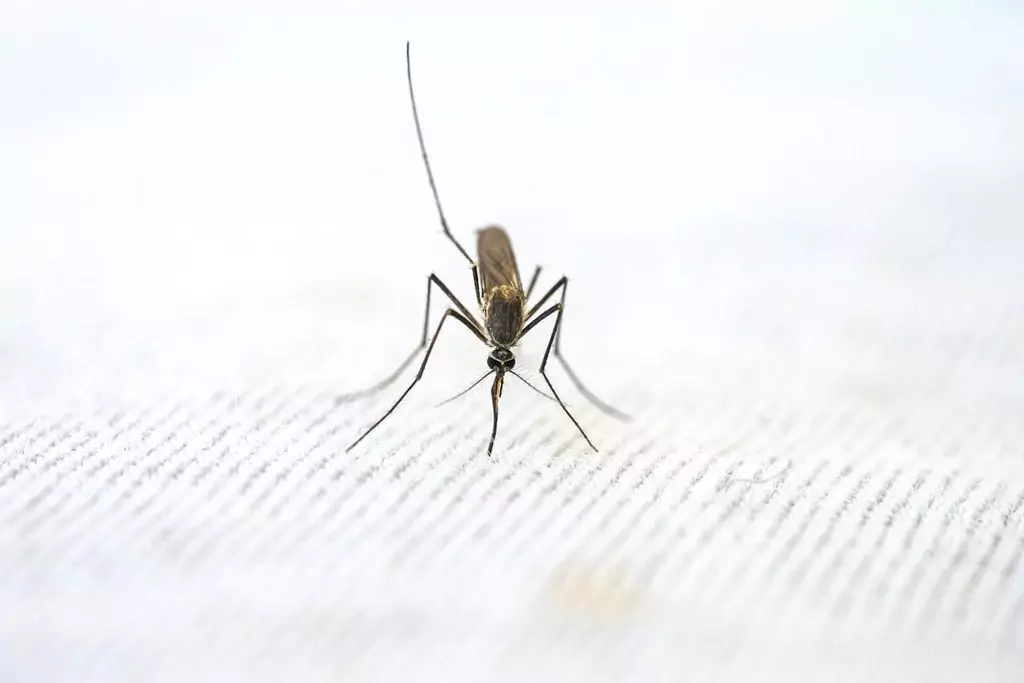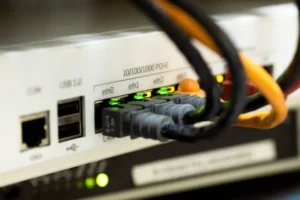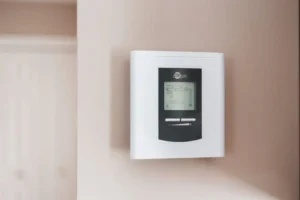Now Reading: Which AC Mode to Use When Raining?
- 01
Which AC Mode to Use When Raining?
- Home
- Home Appliances
- Which AC Mode to Use When Raining?
Which AC Mode to Use When Raining?
![]() Anne MaddisonHome Appliances, Climate ControlAugust 19, 202573 Views
Anne MaddisonHome Appliances, Climate ControlAugust 19, 202573 Views
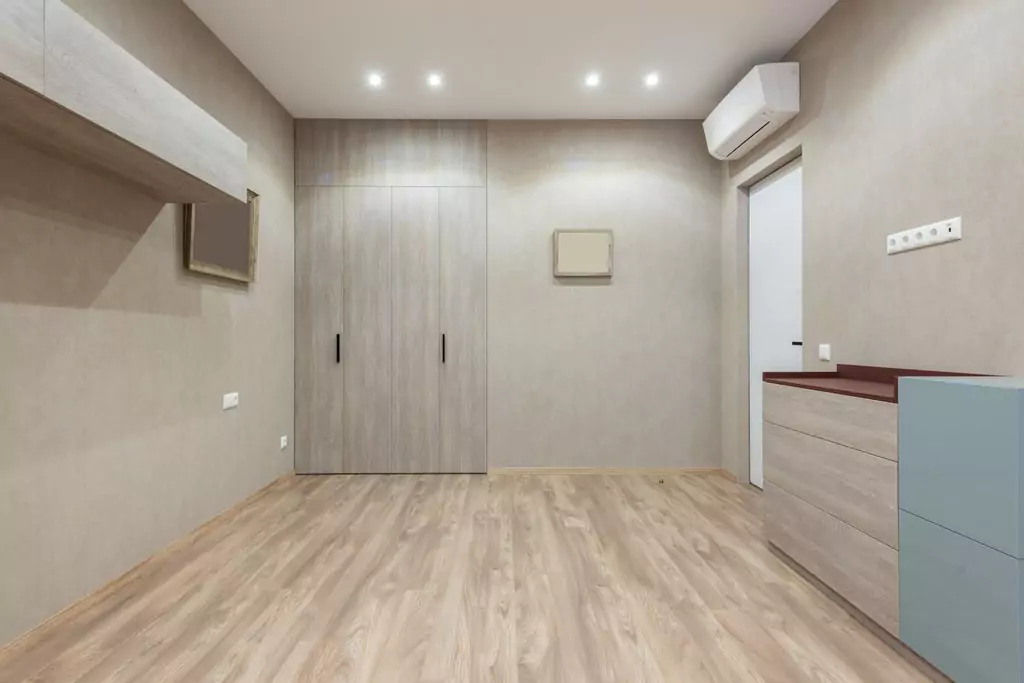
There’s nothing quite like the suffocating humidity that follows a heavy downpour. You step outside after the rain stops, and the air feels thick enough to cut with a knife. Even worse, that sticky, uncomfortable feeling follows you indoors, making your home feel like a tropical greenhouse despite having air conditioning running.
If you’ve ever wondered why your AC doesn’t seem to help much during rainy weather, or if you’ve found yourself constantly adjusting the thermostat without finding relief, you’re not alone. The problem isn’t necessarily your air conditioning system itself but rather which mode you’re using to combat the unique challenges that rainy weather brings to your indoor environment.
Rainy weather creates a perfect storm of high humidity, moderate temperatures, and stagnant air that requires a different approach than your typical summer cooling strategy. During rainy seasons, humidity levels often exceed 80%, creating an environment where traditional cooling modes may not provide the comfort you need while potentially wasting energy and money.
Throughout this comprehensive guide, we’ll explore exactly which AC mode works best when it’s raining, why humidity becomes such a problem during wet weather, and how to optimize your air conditioning system for maximum comfort and efficiency during monsoon season. By the end of this article, you’ll know exactly how to configure your AC to handle any rainy day that comes your way.
Understanding How Rain Affects Indoor Air Quality and Comfort
Before diving into which AC mode to use when raining, it’s crucial to understand what actually happens to your indoor environment when it’s wet outside. Rain doesn’t just affect the outdoor air; it creates a cascade of changes that directly impact your indoor comfort and air quality.
When it rains, the outdoor humidity levels spike dramatically. The recommended range of humidity for indoor environments is between 30 and 50% relative humidity, but during heavy rain or monsoon conditions, outdoor humidity can easily climb above 80% or even 90%. This excess moisture doesn’t stay outside; it finds its way into your home through windows, doors, and even tiny gaps in your building’s structure.
The problem compounds because rain typically brings cooler temperatures, which means you might not feel the need for aggressive cooling. However, the higher the humidity, the higher the sensible temperature. This means that even at moderate actual temperatures, your body perceives the environment as much warmer and more uncomfortable due to the excess moisture in the air.
High humidity during rainy weather creates several specific problems for your indoor environment. Your body’s natural cooling mechanism, sweating, becomes less effective because the moisture can’t evaporate efficiently into the already saturated air. This makes you feel sticky, uncomfortable, and warmer than the actual temperature would suggest.
Additionally, if the rainy season continues, the humidity will exceed 80%, and the environment will be suitable for molds and mites to increase. These allergens can cause health problems and make your indoor air quality deteriorate rapidly. The excess moisture can also cause condensation on windows, walls, and other surfaces, potentially leading to water damage and structural issues over time.
Humidity levels above the typical range might cause problems, but the normal range is beneficial to our health. Therefore, 30-50% relative humidity is what you want in a home. During rainy weather, maintaining this optimal range becomes both more important and more challenging.
Which AC Mode to Use When Raining: The Clear Answer
After analyzing the specific challenges that rainy weather presents, the answer to which AC mode to use when raining is clear: Dry Mode is your best choice for most rainy weather conditions. This mode is specifically designed to address the primary problem that rain creates indoors, which is excessive humidity rather than excessive heat.
Dry mode maintains the same temperature while removing excessive moisture, perfect for rainy weather when humidity is the primary concern. Unlike Cool Mode, which focuses on lowering temperature, Dry Mode prioritizes extracting water vapor from the air while maintaining a comfortable temperature.
When you activate dry mode, the fan on your AC is set to a higher speed, which helps circulate and draw moisture out of the air. This increased air circulation is crucial during rainy weather because it helps prevent the stagnant, humid conditions that make indoor spaces feel uncomfortable and unhealthy.
The science behind why Dry Mode works so well for rainy weather is straightforward. Dry mode is best used when the ambient temp is low or comfortable but the humidity is high making it uncomfortable, for example a 26-27°C day with 80% humidity. Or on a rainy or humid day when everything in your home is beginning to get damp from the humidity.
For optimal results during rainy weather, set your air conditioner to 24°C for dry mode. This temperature effectively reduces indoor moisture without making the room feel too cold. This temperature setting works well because it provides enough cooling to support the dehumidification process without overcooling your space when the outdoor temperatures are already moderated by rain.
Dry mode is most effective during seasons or weather conditions when the humidity is high but the temperature is not too hot, such as in spring, fall, or during rainy days. This makes it the perfect solution for those humid, sticky days that follow thunderstorms or during extended periods of wet weather.
After rain, humidity levels can spike. This is the perfect time to curb the humidity in your home by activating your AC’s dry setting. The timing is crucial because acting quickly after rain can prevent the humidity from becoming entrenched in your indoor environment.
If you’ve ever wondered whether keeping your home AC at 72°F actually saves money, check out our full guide on does keeping home AC at 72°F save money.
Dry Mode vs Other AC Modes During Rainy Weather
Understanding why Dry Mode outperforms other AC modes during rainy weather requires comparing how each mode handles the specific challenges that wet conditions create. Let’s examine how the most common AC modes stack up against the humidity and comfort issues that rain brings.
Dry Mode vs Cool Mode in Rainy Conditions
Cool Mode focuses primarily on temperature reduction, running the compressor continuously to bring down the ambient temperature to your set point. During rainy weather, this approach has several disadvantages. The moderate temperatures that typically accompany rain mean you don’t need aggressive cooling, so Cool Mode may overcool your space while doing little to address the humidity that’s making you uncomfortable.
The cooling mode utilizes more energy due to continuous compressor operation and higher fan speed settings. Dry mode operation results in lower energy consumption. This energy difference becomes especially important during rainy seasons when you might need to run your AC for extended periods to maintain comfort.
Cool Mode also tends to create temperature swings during rainy weather. As the system cycles on and off to maintain your set temperature, humidity levels can fluctuate, leading to periods where the air feels clammy and uncomfortable even when the temperature is technically correct.
Dry Mode vs Auto Mode During Rain
Auto Mode adjusts both temperature and humidity based on sensor readings, which sounds ideal for rainy weather conditions. However, Auto Mode doesn’t prioritize humidity control the way Dry Mode does. While Auto Mode will respond to both temperature and humidity changes, it may not remove moisture as aggressively as needed during particularly humid rainy periods.
The advantage of Auto Mode is its adaptability, but during consistent rainy weather, the focused approach of Dry Mode typically provides better results. Auto Mode works well when weather conditions are changing frequently, but when you’re dealing with sustained humid conditions from ongoing rain, Dry Mode’s specialized function is more effective.
Dry Mode vs Fan Mode in Wet Weather
Fan Mode simply circulates air without running the compressor, which means it doesn’t remove humidity from the air. While air circulation can help with comfort by increasing evaporation from your skin, it doesn’t address the root cause of discomfort during rainy weather, which is the excess moisture in the air itself.
Fan Mode might feel temporarily refreshing, but without actual dehumidification, the underlying humidity problem persists. In fact, running only Fan Mode during very humid conditions might actually make you feel more uncomfortable by highlighting the stickiness in the air.
Energy Efficiency Comparison
Dry mode operation results in lower energy consumption compared to Cool Mode because it doesn’t need to run the compressor as intensively or continuously. During rainy weather, when temperatures are already moderated, this energy efficiency becomes a significant advantage.
The focused approach of Dry Mode means it can achieve the comfort improvements you need with less energy expenditure, making it both the most effective and most economical choice for rainy weather conditions.
Expert Tips for Using AC Effectively During Monsoon Season
Successfully managing your indoor environment during rainy season goes beyond just selecting Dry Mode. These expert strategies will help you maximize your AC’s effectiveness while minimizing energy costs during extended periods of wet weather.
Optimal Temperature Settings for Rainy Weather
For the best temperature for dry mode, set your air conditioner to 24°C. This temperature provides the sweet spot for effective dehumidification without excessive cooling. If your area experiences particularly high humidity, you might need to lower this to 22-23°C, but avoid going below 22°C unless absolutely necessary.
The key is finding the temperature that allows your AC to remove moisture effectively while maintaining comfort. Too high, and the dehumidification won’t be adequate. Too low, and you’ll waste energy on unnecessary cooling while potentially making your space uncomfortably cold.
Timing Your AC Operation
Switch to Dry Mode in the early mornings or late evenings when humidity peaks. These are typically the times when outdoor humidity is highest, and your indoor environment is most likely to be affected by moisture infiltration.
Consider running Dry Mode for 2-3 hours after heavy rainfall to prevent humidity from building up in your indoor spaces. This proactive approach is more effective and energy-efficient than trying to remove entrenched moisture later.
Ventilation and Air Circulation Strategies
During rainy weather, natural ventilation becomes limited, making your AC’s air circulation function even more important. Ensure that air vents are unobstructed and that air can flow freely throughout your space. Use ceiling fans in conjunction with Dry Mode to enhance air circulation and improve the moisture removal process.
Keep interior doors open when possible to allow air to circulate between rooms. This helps prevent pockets of high humidity from developing in areas that might not receive direct airflow from your AC system.
Maintenance Considerations for Rainy Season
Clean or replace your AC filters more frequently during rainy season. High humidity can cause filters to become clogged more quickly, reducing your system’s effectiveness at removing moisture from the air. A clean filter also ensures optimal airflow, which is crucial for effective dehumidification.
Check and clean the condensate drain regularly during rainy season. The increased moisture removal means your AC will produce more condensate, and a blocked drain can lead to water backup and reduced efficiency.
Managing Indoor Humidity Sources
During rainy weather, be extra mindful of activities that add moisture to your indoor air. Limit cooking that produces steam, take shorter showers with good ventilation, and avoid air-drying clothes indoors. These activities can overwhelm your AC’s dehumidification capacity, especially during periods of high outdoor humidity.
For tips on improving your indoor air quality, dive into our article on whether an air conditioner can filter smoke at home.
Common Mistakes to Avoid When Using AC During Rainy Weather
Even with the right mode selection, certain mistakes can undermine your AC’s effectiveness during rainy weather. Avoiding these common errors will help you maintain comfort while keeping energy costs manageable throughout the wet season.
Setting the Temperature Too Low
One of the most frequent mistakes is dramatically lowering the temperature setting thinking it will help with humidity. While lower temperatures do help with dehumidification to some extent, setting your AC too low during rainy weather often results in overcooling without proportional humidity benefits. Remember, dry mode maintains the same temperature while removing excessive moisture, so focus on the mode rather than extreme temperature settings.
Switching Modes Too Frequently
Some people constantly switch between different AC modes during rainy weather, thinking this will provide better results. However, frequent mode changes prevent your system from operating efficiently in any single mode. Give Dry Mode time to work, typically 30-60 minutes, before evaluating its effectiveness.
Ignoring Humidity Levels vs Temperature
Many people focus solely on temperature readings without considering humidity levels. During rainy weather, a room at 26°C with 40% humidity will feel much more comfortable than the same room with 80% humidity. The recommended range of humidity for indoor environments is between 30 and 50% relative humidity, so consider investing in a hygrometer to monitor both temperature and humidity levels.
Blocking Air Circulation
Placing furniture, curtains, or other objects in front of air vents reduces your AC’s ability to circulate air effectively. During humid weather, good air circulation is crucial for moisture removal. Ensure all vents are clear and that air can move freely throughout your space.
Not Addressing External Moisture Sources
Running Dry Mode while allowing moisture to continuously enter your space from outside defeats the purpose. Check for and seal air leaks around windows and doors, ensure proper weatherstripping, and consider using exhaust fans in kitchens and bathrooms to prevent internal moisture buildup.
Expecting Immediate Results
Dry Mode works more gradually than Cool Mode, focusing on moisture removal rather than rapid temperature change. Some people switch away from Dry Mode too quickly when they don’t see immediate temperature drops, not realizing that the comfort improvement comes from reduced humidity rather than cooler air.
Using the Wrong Mode for Your Climate
In coastal or tropical areas, dry mode is particularly beneficial year-round, but in areas with different climate patterns, the best rainy weather strategy might vary. Don’t assume that what works in one climate will work in another without considering your local humidity patterns.
Conclusion
When it comes to which AC mode to use when raining, Dry Mode is clearly the optimal choice for most situations. This specialized mode addresses the root cause of discomfort during wet weather, which is excessive humidity rather than high temperatures. By focusing on moisture removal while maintaining comfortable temperatures, Dry Mode provides superior comfort and energy efficiency compared to traditional Cool Mode during rainy conditions.
The key insights to remember are that rainy weather creates unique indoor climate challenges that require a targeted approach. Humidity levels can exceed 80% during rainy periods, making your indoor space feel uncomfortable and potentially unhealthy even at moderate temperatures. Dry Mode specifically tackles this problem by prioritizing dehumidification over aggressive cooling.
For optimal results, set your AC to Dry Mode at 24°C when rain begins, and allow the system to run for several hours to effectively remove excess moisture from your indoor air. Combine this with good air circulation, proper maintenance, and awareness of indoor humidity sources for the best results.
Remember that the effectiveness of any AC mode during rainy weather depends on proper usage and realistic expectations. Dry Mode works gradually to create lasting comfort improvements rather than providing instant temperature drops. Be patient with the process and focus on humidity reduction rather than temperature readings alone.
Ready to transform your rainy day comfort? Start by locating the Dry Mode setting on your AC remote and testing it during the next rainy period in your area. Pay attention to how the air feels rather than just the temperature display, and track your energy usage to see the efficiency benefits. You might be surprised at how much more comfortable your home can be during wet weather with just this simple mode change.
Have you tried using Dry Mode during rainy weather? What differences have you noticed in your indoor comfort and energy bills when switching from Cool Mode to Dry Mode during humid conditions?
Related Posts
Previous Post
Next Post
Previous Post
Next Post
Home AppliancesJuly 28, 2025
Can Air Conditioner Make You Sick?
Home AppliancesJuly 27, 2025
What Air Conditioner Size Do I Need?
Home AppliancesAugust 24, 2025
Are Home Air Conditioner Tune Ups Necessary
Climate ControlAugust 23, 2025
Can Air Conditioning at Home Trigger Asthma?
- 03
Home AppliancesJuly 28, 2025
Can Air Conditioner Make You Sick?
- 04
Home AppliancesJuly 27, 2025
What Air Conditioner Size Do I Need?


